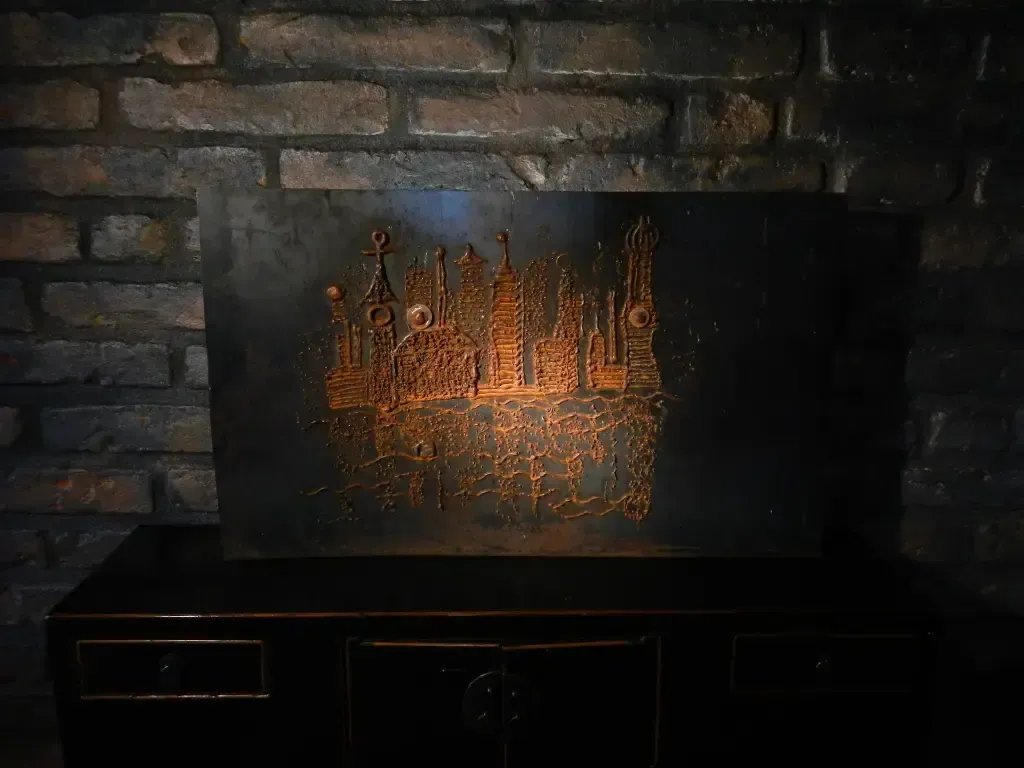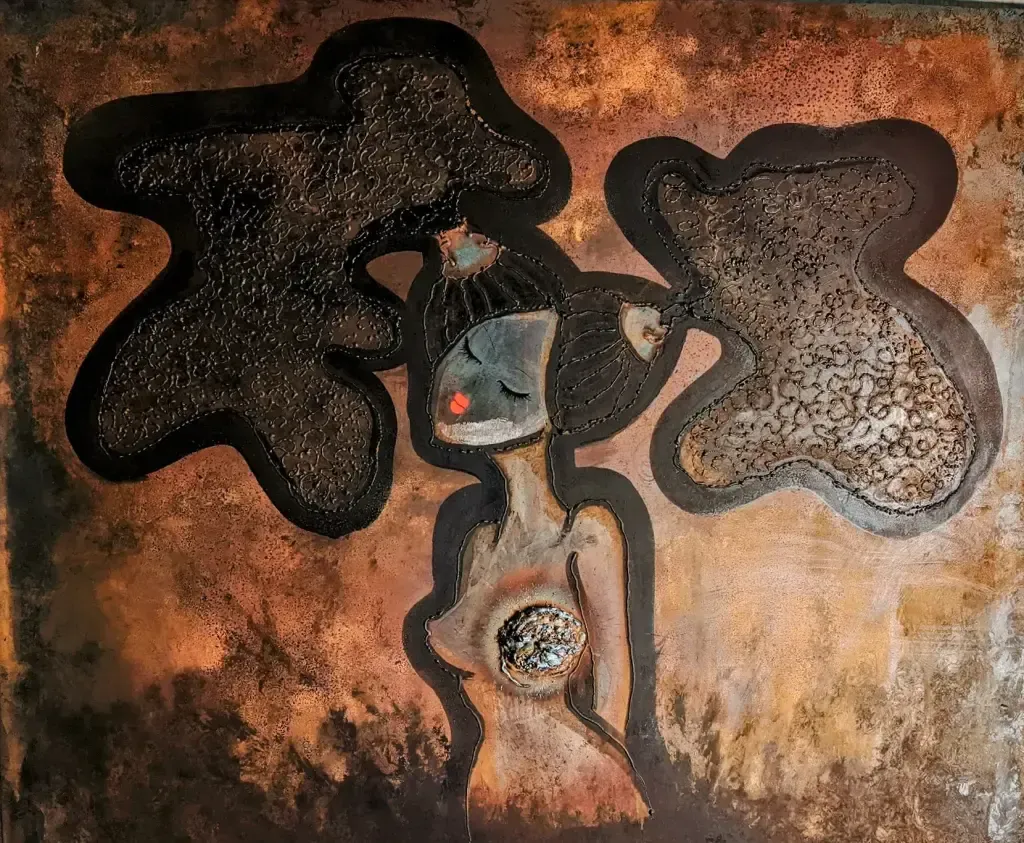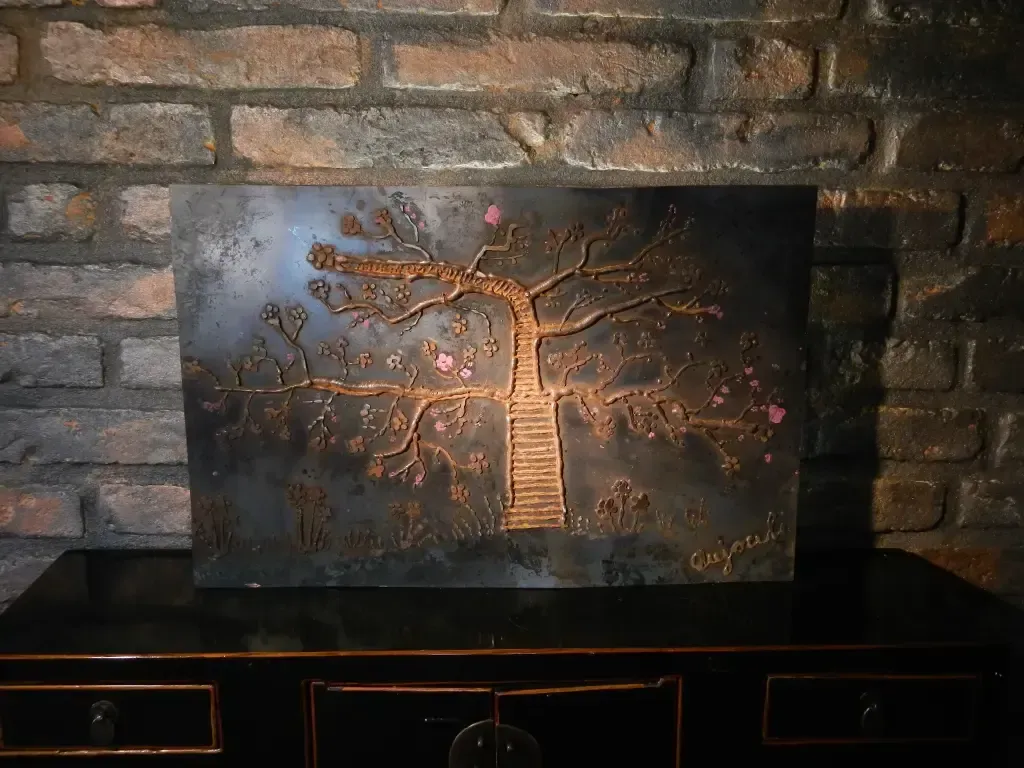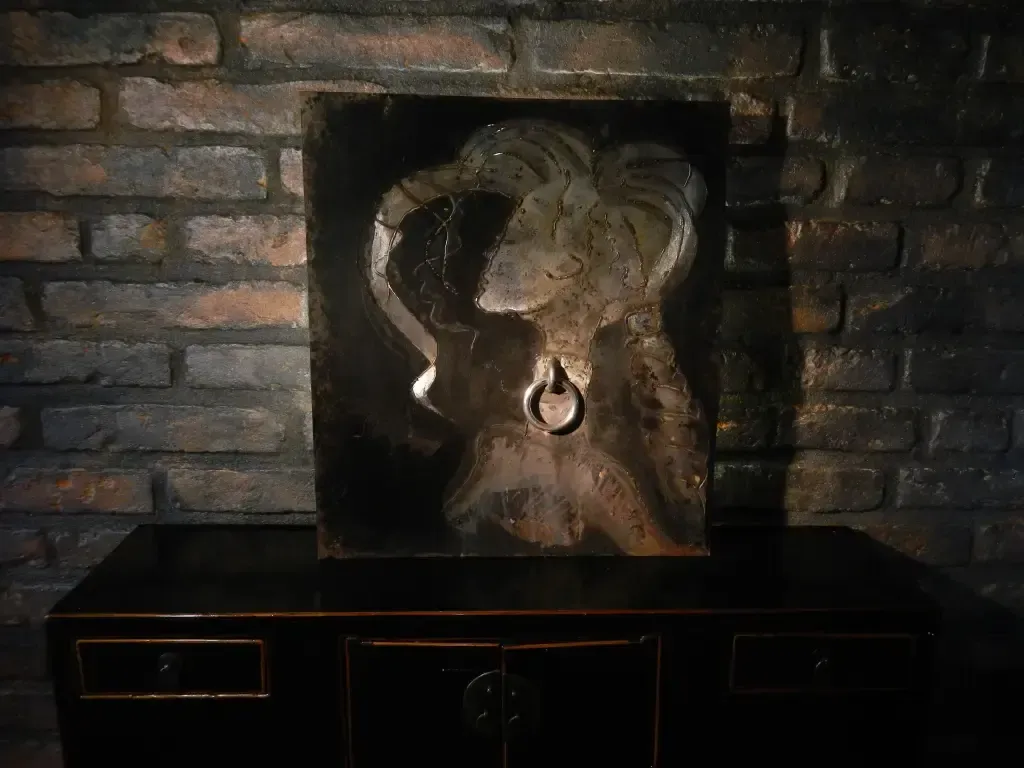A new creative technique: painting with liquid steel
developed by Ariane Karina Simon
My working materials are sheet metal with a thickness of 2 to 6 mm. Some are brand new, others I ferret from old stocks or all sorts of weird places, fascinated by the patina of the past. If a workpiece already brings a history with it, its story is always palpable and visible, through the shape or rust, through cracks, tarnishing and dents - or through 'something' that you may not be able to put your finger on. Old shipbuilding steel from a saltwater wreck communicates differently than sheet metal from a 150-year-old artisan business that was destroyed by a major fire. I try to connect with this individual story or energy and then I start to expose whatever wants to be seen or to be freed ...
The special thing about liquidsteel painting is that the resulting picture is not only created by the artist but also by the sheet metal itself. I am aware that we are talking about inanimate matter - and yet: when the red-hot weld seam is applied, the affected area contracts, the workpiece builds up tension and begins to change shape, to ripple, to warp. This gives a strong impression as if the steel plate reacts directly to the motif being applied to it. The thinner the plate, the greater the deformation.
Of course this could be prevented, for instance by fixing the workpiece with clamps before welding and doing a stress relieving heat treatment after. Yet it touches me deeply when such a powerful and strong material like steel reacts and interacts in this unpredictable way - and finally stiffens in an altered form as a kind of answer, frozen in time. I don't want to force it into motionlessness. It already is fantastic enough just to be part of this dialogue...
Of course this could be prevented, for instance by fixing the workpiece with clamps before welding and doing a stress relieving heat treatment after. Yet it touches me deeply when such a powerful and strong material like steel reacts and interacts in this unpredictable way - and finally stiffens in an altered form as a kind of answer, frozen in time. I don't want to force it into motionlessness. It already is fantastic enough just to be part of this dialogue... I do outlines with MIG welding machines. For effects, structure, reflections or setting a lightmood, I use a MAG gun, angle grinders, plasma cutters or Dremel tools. I work with acids. I provoke rust. Light or shadow comes from polishing, grinding or etching methods. Heat tinting and tinder create amazing accents. I cut, burn, punch holes or dents when the subject calls for it. Well, it's a martial process. But in creativity and in life the best things often arise under the influence of the harshest conditions. For this work I need passion and strength but while doing it every fiber of my being feels awake and alive. This is gorgeous, simply amazing.

The challenge with all the procedures coming with liquidsteel painting lies in the fact that controlled and fine work, like you would be able to do with brushes, is not possible. Bulky hose packages, the great weight of all components and materials, the power of the heat or torque of the tools only support powerful, determined, emotional movements. The viewing glass of the welding helmet is super tiny and the darkening during welding means you only have a restricted overview, so you need to work intuitively. Every action is irreversible though. There is no eraser, no covering trick, no digital ‘undo’, no painting over, no new sheet of paper: a weld seam remains a weld seam and the material is much too special and expensive to waste it.





